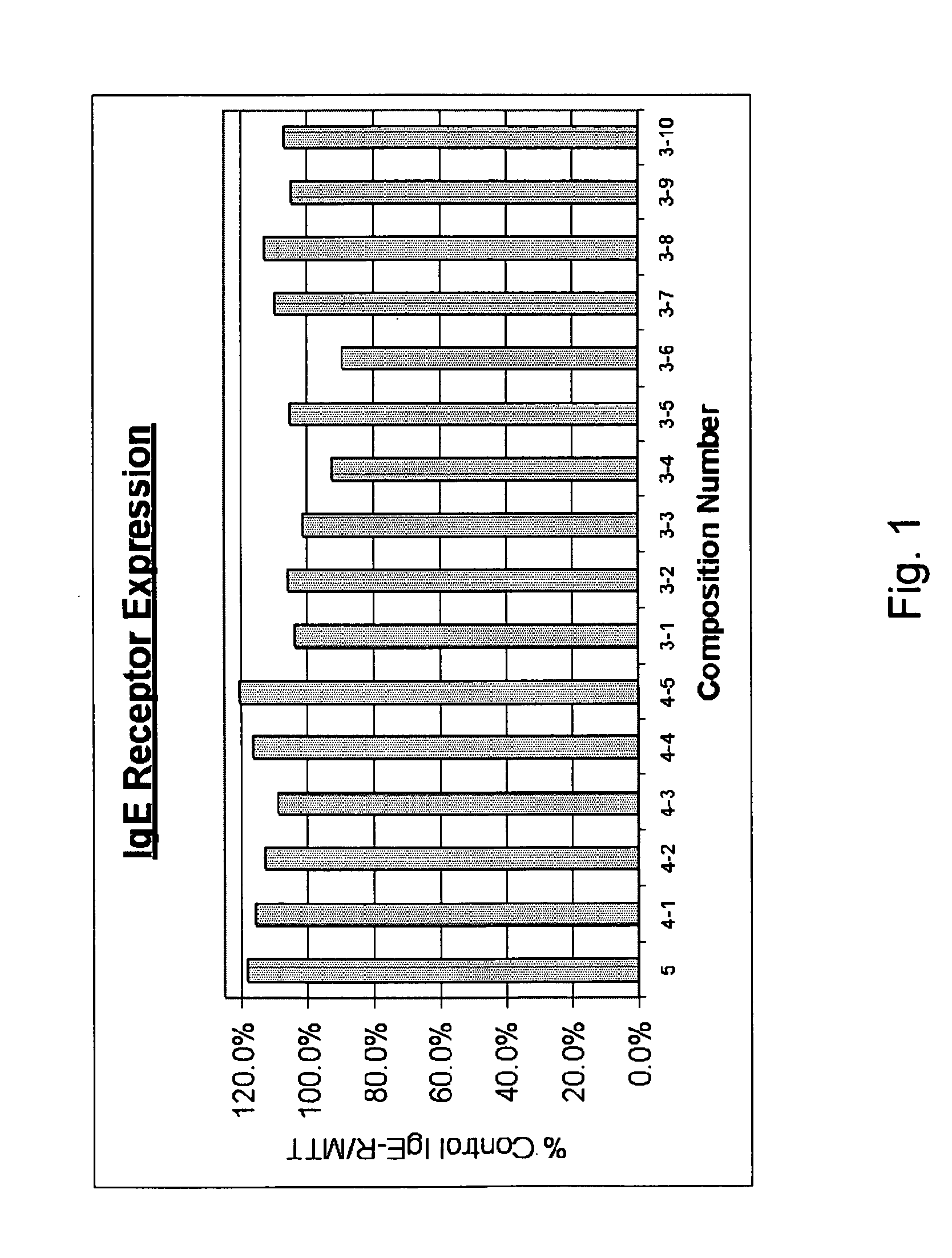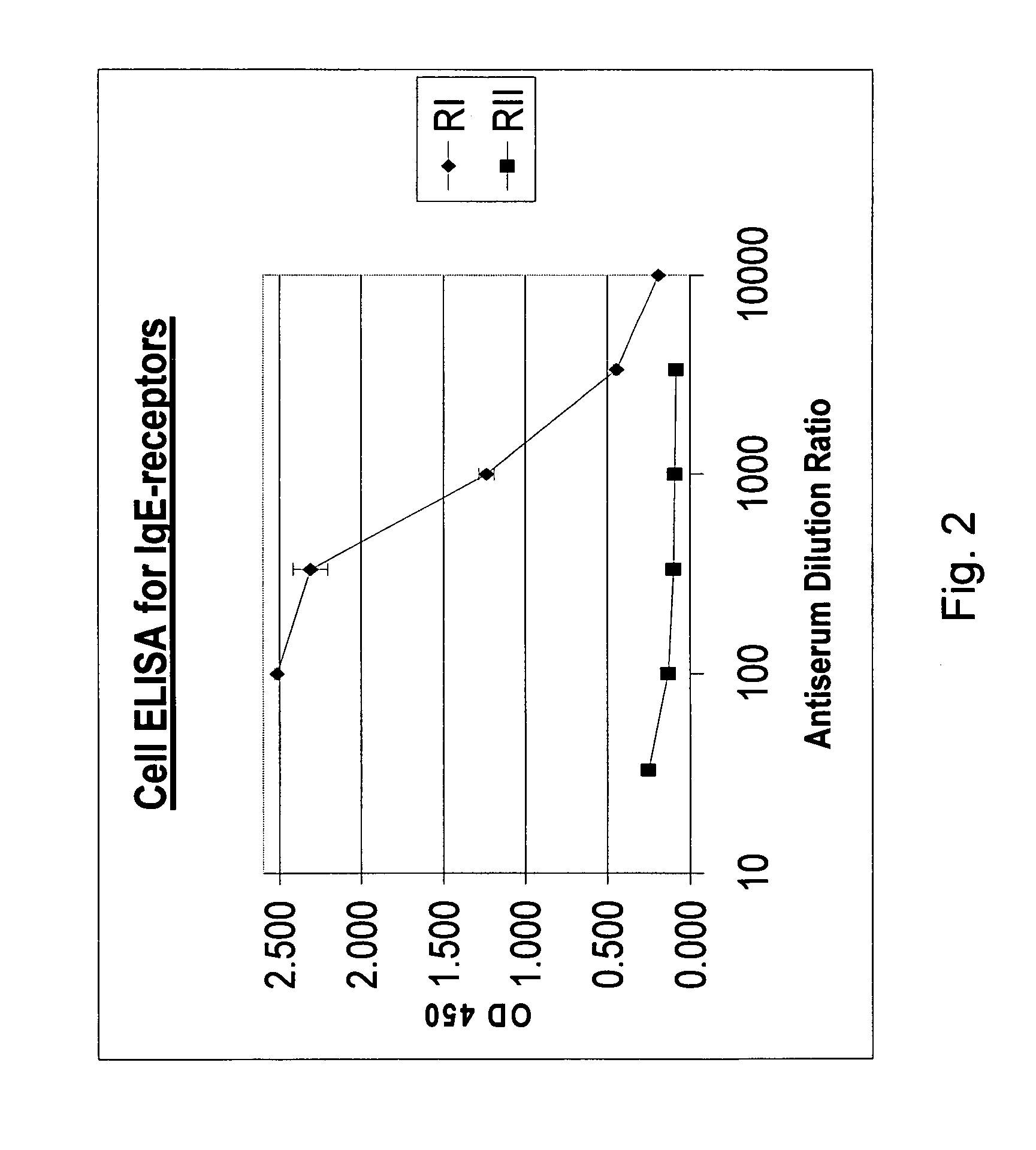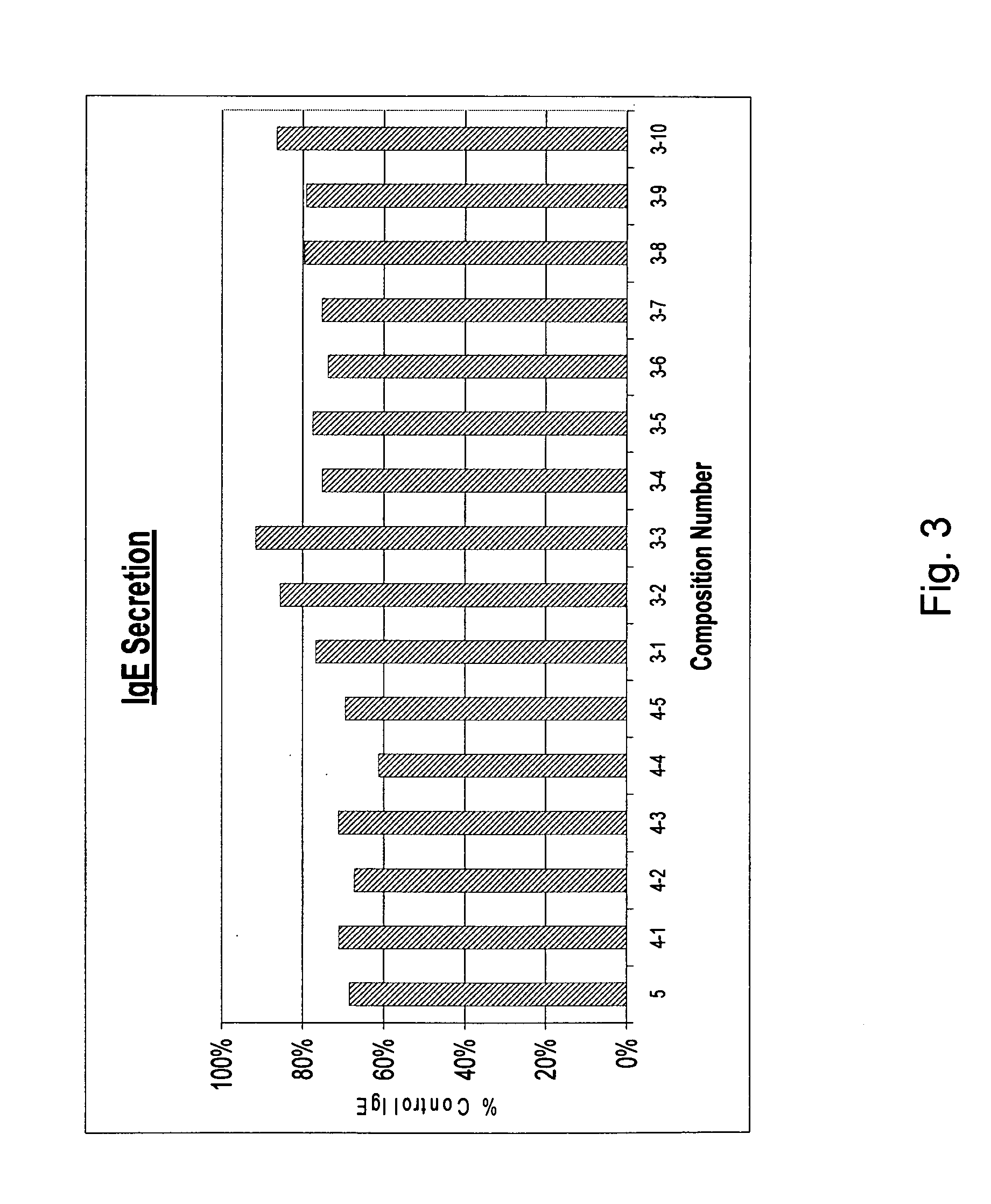Anti-allergy composition and related method
a technology of composition and anti-allergy, applied in the field of anti-allergy composition and related methods, can solve the problems of many drugs used to inhibit the degranulation and inflammation steps also having undesirable side effects, and cannot stop the underlying inflammatory process, so as to reduce the potential for adverse side effects, inhibit or delay the release, and prevent or delay the sensitization of mast cells
- Summary
- Abstract
- Description
- Claims
- Application Information
AI Technical Summary
Benefits of technology
Problems solved by technology
Method used
Image
Examples
example 1
[0057] Multiple combinations of composition ingredients, presented in Table I, were tested to determine the each of the combination's effectiveness in controlling IgE receptor expression. In each of the compositions of Table I, the ingredients are present in equal amounts. FIG. 1 demonstrates the effects of the compositions on IgE receptor expression.
TABLE ISample Composition Combinations of Ingredients5 ingredients4 ingredients3 ingredientsPerilla seed4-1Perilla seed3-1Perilla seedHesperidin 80%Hesperidin 80%Hesperidin 80%Picao pretoPicao pretoPicao pretoKiwi extractKiwi extractCinnamomum3-2Perilla seed4-2Perilla seedHesperidin 80%Hesperidin 80%Kiwi extractPicao pretoCinnamomum3-3Perilla seedHesperidin 80%4-3Perilla seedCinnamomumHesperidin 80%Kiwi extract3-4Perilla seedCinnamomumPicao pretoKiwi extract4-4Perilla seedPicao preto3-5Perilla seedKiwi extractPicao preto4-5Hesperidin 80%3-6Perilla seedPicao pretoKiwi extractKiwi extractCinnamomum3-7Hesperidin 80%Picao preto3-8Picao pr...
example 2
[0067] Multiple individual ingredients of the composition were tested to determine the effectiveness of each ingredient at controlling IgE receptor expression. Each of the individual ingredients in Tables II and III below were tested using the methodology presented above in connection with the combinations of ingredients in Example 1. The data expressed as Percent Control IgE Receptor / Viability denotes the level of IgE receptor expression of treated cells relative to untreated control cells in each experiment. The ingredients tested show different levels of satisfactory reductions in IgE receptor expression.
TABLE IIEffect of Individual Ingredients on IgE Receptor ExpressionPercent Control IgEIngredientReceptor / ViabilityPerilla seed81%Cinnamon86%Picao preto91%Hesperidin 80%90%Guaco85%Holy Basil87%Kakadu concentrate83%Solarnum85%
[0068] In addition to the ingredients in Table II, other ingredients that can be used include Kiwi extract, Kiwi juice, and Acerola Cherry. The Holy Basil o...
example 3
[0070] Multiple combinations of ingredients presented in Table II above were tested to determine the combinations effectiveness in controlling IgE secretion by cells. FIG. 3 demonstrates the effects of the composition combinations on IgE secretion by cells relative to IgE secretion of cells untreated with the compositions. Specifically, FIG. 3 presents the combination of ingredients, that is, the compositions, identified in Table I on the X-axis. The Y-axis depicts the data expressed as a percentage of the levels of IgE secreted by control cells, that is cells to which no compositions were added.
[0071] As shown in FIG. 3, the most effective compositions were 3-1,3-4,3-5,3-6 and 3-7. Those compositions comprise: Perilla seed, Hesperidin 80%, and Picao preto (3-1); Perilla seed, Picao preto, and Kiwi extract (3-4); Perilla seed, Picao preto, and Cinnamomum (3-5); Perilla seed, Kiwi extract, and Cinnamomum (3-6); Heperidin 80%, Picao preto and Cinnamomum (3-7). As evident in FIG. 3, t...
PUM
| Property | Measurement | Unit |
|---|---|---|
| concentrations | aaaaa | aaaaa |
| weight percent | aaaaa | aaaaa |
| pH | aaaaa | aaaaa |
Abstract
Description
Claims
Application Information
 Login to View More
Login to View More - R&D
- Intellectual Property
- Life Sciences
- Materials
- Tech Scout
- Unparalleled Data Quality
- Higher Quality Content
- 60% Fewer Hallucinations
Browse by: Latest US Patents, China's latest patents, Technical Efficacy Thesaurus, Application Domain, Technology Topic, Popular Technical Reports.
© 2025 PatSnap. All rights reserved.Legal|Privacy policy|Modern Slavery Act Transparency Statement|Sitemap|About US| Contact US: help@patsnap.com



